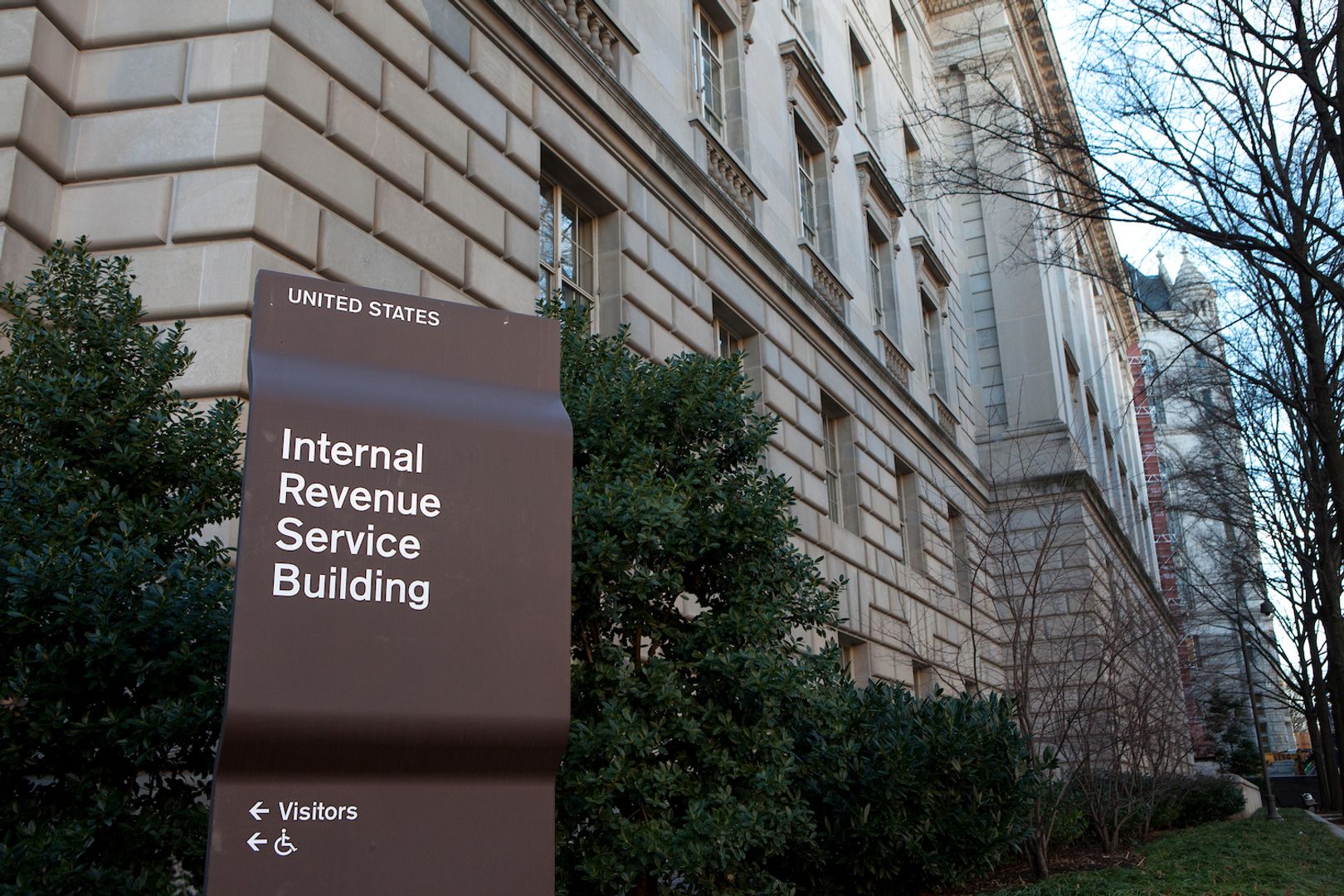Uncategorized
The Coming Crypto Tax Bomb

Crypto taxpayers are in for a rude awakening.
We’re 16+ years into Bitcoin, yet taxpayers and CPAs still pretend that tax guidance remains unclear or even nonexistent. The IRS is gearing up for a historic wave of compliance audits targeting the crypto space, and taxpayers have no idea what they’re in for.
Last year, the IRS issued Revenue Procedure 2024-28, fundamentally changing how crypto should be tracked from a tax perspective. Providing crystal clear guidance, safe harbors for taxpayers to get compliant, and deadlines to migrate by. The rules are clear, the expectations set, with the IRS quietly positioning itself to issue a wave of compliance audits for those still with their head in the sand.
The reckoning is already beginning as we’re seeing an unprecedented amount of 6174, 6174-A, and 6173 letters being sent out by the IRS.
Typically, this time of the year is quiet. But for the past several weeks, our phone has been ringing non-stop from taxpayers receiving these notices from the IRS demanding they get compliant “or else.” And it’s not just us – crypto tax firms across the board are reporting the same activity, indicating the IRS knows taxpayers have casually engaged in crypto tax evasion, and they are here to collect what they’ve failed to collect for the past decade.
Strategically pairing Rev-Proc 24-28 with the release of the new Form 1099-DA, the IRS is positioned to blindside taxpayers and CPAs who have neglected getting compliant. The 2025 tax year will be pivotal as the IRS now has an abundance of ammunition to use in audits. Gone are the days where taxpayers could defer to defenses like “well, the guidance was unclear, so I just did my best.” The IRS has been explicit, the guidance is clear, and the penalties for non-compliance have been outlined, yet taxpayers and CPAs still assume we’re in the Wild West.
On top of this, Form 1099-DAs will be issued to both taxpayers and the IRS alike by brokers, but there’s a major catch: the form won’t include cost basis for the 2025 tax year, and will almost certainly include incorrect cost basis for years after.
That means when you transfer assets into an exchange and later sell them, the sale gets reported — but the exchange has no idea what you originally paid. In the absence of that information, the form defaults to showing a $0 cost basis. To the IRS or a traditional CPA, it looks like pure profit.
Say you buy 1 ETH for $2,200, move it to Coinbase, and sell it for $2,500. If Coinbase doesn’t have the cost basis, the form shows a $2,500 gain. Your actual gain was $300 — but unless you’ve tracked that basis yourself, the IRS won’t know. And they’ll assume the worst.
A widespread problem
This isn’t a one-off scenario. It’s going to affect hundreds of thousands of taxpayers.
If those inflated gains go uncorrected, they’ll either result in unnecessary tax owed or trigger an audit. And many CPAs won’t catch it, because most still aren’t equipped to handle crypto properly. They don’t understand how wallets work. They confuse transfers with sales. They miss staking rewards and DeFi activity entirely. Clients think their CPA is on top of it. CPAs assume the 1099 is accurate. No one’s double-checking.
That’s where things go wrong. And that’s exactly what the IRS is counting on.
The old defense — that the guidance wasn’t clear — doesn’t hold up anymore. The IRS has been direct. The expectations are spelled out. The time to fix things is NOW, before an enforcement letter is received.
Crypto isn’t some edge case anymore. Tens of millions of Americans have bought, sold, staked, lent, or transferred digital assets. Most have done a poor job keeping records. Some haven’t even tried. The result is a tax system full of underreported gains, misclassified income, inconsistent filings, and the taxman looking for revenge.
The most common mistakes aren’t complex. Transfers between wallets are flagged as sales. Assets appear on exchanges with no cost basis attached. Staking rewards and airdrops go unreported. DeFi activity is missing entirely. And year after year, taxpayers and professionals rely on CSV exports that were never designed for tax reporting in the first place.
These aren’t edge cases. They’re pervasive amongst crypto investors. And at scale, they add up to a compliance problem the IRS is now fully equipped to pursue.
This is no longer about gray areas or technicalities. It’s about a growing mismatch between how taxpayers think crypto taxes work — and how the IRS now expects them to be handled. That gap is where the risk lives, and with the established guidance, the IRS won’t be pulling any punches.
Business
Crypto Trading Firm Keyrock Buys Luxembourg’s Turing Capital in Asset Management Push

Crypto trading firm Keyrock said it’s expanding into asset and wealth management by acquiring Turing Capital, a Luxembourg-registered alternative investment fund manager.
The deal, announced on Tuesday, marks the launch of Keyrock’s Asset and Wealth Management division, a new business unit dedicated to institutional clients and private investors.
Keyrock, founded in Brussels, Belgium and best known for its work in market making, options and OTC trading, said it will fold Turing Capital’s investment strategies and Luxembourg fund management structure into its wider platform. The division will be led by Turing Capital co-founder Jorge Schnura, who joins Keyrock’s executive committee as president of the unit.
The company said the expansion will allow it to provide services across the full lifecycle of digital assets, from liquidity provision to long-term investment strategies. «In the near future, all assets will live onchain,» Schnura said, noting that the merger positions the group to capture opportunities as traditional financial products migrate to blockchain rails.
Keyrock has also applied for regulatory approval under the EU’s crypto framework MiCA through a filing with Liechtenstein’s financial regulator. If approved, the firm plans to offer portfolio management and advisory services, aiming to compete directly with traditional asset managers as well as crypto-native players.
«Today’s launch sets the stage for our longer-term ambition: bringing asset management on-chain in a way that truly meets institutional standards,» Keyrock CSO Juan David Mendieta said in a statement.
Read more: Stablecoin Payments Projected to Top $1T Annually by 2030, Market Maker Keyrock Says
Business
Crypto Trading Firm Keyrock Buys Luxembourg’s Turing Capital in Asset Management Push

Crypto trading firm Keyrock said it’s expanding into asset and wealth management by acquiring Turing Capital, a Luxembourg-registered alternative investment fund manager.
The deal, announced on Tuesday, marks the launch of Keyrock’s Asset and Wealth Management division, a new business unit dedicated to institutional clients and private investors.
Keyrock, founded in Brussels, Belgium and best known for its work in market making, options and OTC trading, said it will fold Turing Capital’s investment strategies and Luxembourg fund management structure into its wider platform. The division will be led by Turing Capital co-founder Jorge Schnura, who joins Keyrock’s executive committee as president of the unit.
The company said the expansion will allow it to provide services across the full lifecycle of digital assets, from liquidity provision to long-term investment strategies. «In the near future, all assets will live onchain,» Schnura said, noting that the merger positions the group to capture opportunities as traditional financial products migrate to blockchain rails.
Keyrock has also applied for regulatory approval under the EU’s crypto framework MiCA through a filing with Liechtenstein’s financial regulator. If approved, the firm plans to offer portfolio management and advisory services, aiming to compete directly with traditional asset managers as well as crypto-native players.
«Today’s launch sets the stage for our longer-term ambition: bringing asset management on-chain in a way that truly meets institutional standards,» Keyrock CSO Juan David Mendieta said in a statement.
Read more: Stablecoin Payments Projected to Top $1T Annually by 2030, Market Maker Keyrock Says
Business
Gemini Shares Slide 6%, Extending Post-IPO Slump to 24%

Gemini Space Station (GEMI), the crypto exchange founded by Cameron and Tyler Winklevoss, has seen its shares tumble by more than 20% since listing on the Nasdaq last Friday.
The stock is down around 6% on Tuesday, trading at $30.42, and has dropped nearly 24% over the past week. The sharp decline follows an initial surge after the company raised $425 million in its IPO, pricing shares at $28 and valuing the firm at $3.3 billion before trading began.
On its first day, GEMI spiked to $45.89 before closing at $32 — a 14% premium to its offer price. But since hitting that high, shares have plunged more than 34%, erasing most of the early enthusiasm from public market investors.
The broader crypto equity market has remained more stable. Coinbase (COIN), the largest U.S. crypto exchange, is flat over the past week. Robinhood (HOOD), which derives part of its revenue from crypto, is down 3%. Token issuer Circle (CRCL), on the other hand, is up 13% over the same period.
Part of the pressure on Gemini’s stock may stem from its financials. The company posted a $283 million net loss in the first half of 2025, following a $159 million loss in all of 2024. Despite raising fresh capital, the numbers suggest the business is still far from turning a profit.
Compass Point analyst Ed Engel noted that GEMI is currently trading at 26 times its annualized first-half revenue. That multiple — often used to gauge whether a stock is expensive — means investors are paying 26 dollars for every dollar the company is expected to generate in sales this year. For a loss-making company in a volatile sector, that’s a steep price, and could be fueling investor skepticism.
-

 Business11 месяцев ago
Business11 месяцев ago3 Ways to make your business presentation more relatable
-

 Fashion11 месяцев ago
Fashion11 месяцев agoAccording to Dior Couture, this taboo fashion accessory is back
-

 Entertainment11 месяцев ago
Entertainment11 месяцев ago10 Artists who retired from music and made a comeback
-

 Entertainment11 месяцев ago
Entertainment11 месяцев ago\’Better Call Saul\’ has been renewed for a fourth season
-

 Entertainment11 месяцев ago
Entertainment11 месяцев agoNew Season 8 Walking Dead trailer flashes forward in time
-

 Business11 месяцев ago
Business11 месяцев ago15 Habits that could be hurting your business relationships
-

 Entertainment11 месяцев ago
Entertainment11 месяцев agoMeet Superman\’s grandfather in new trailer for Krypton
-

 Entertainment11 месяцев ago
Entertainment11 месяцев agoDisney\’s live-action Aladdin finally finds its stars




